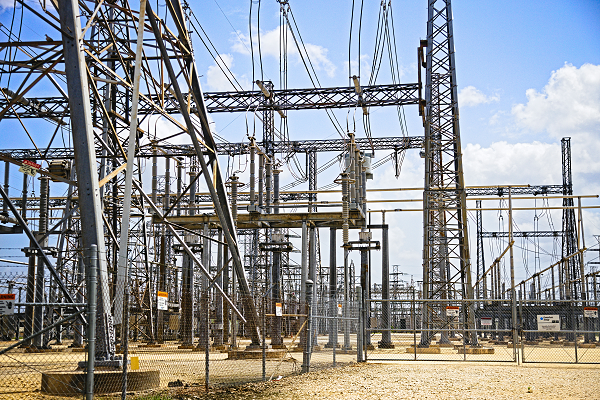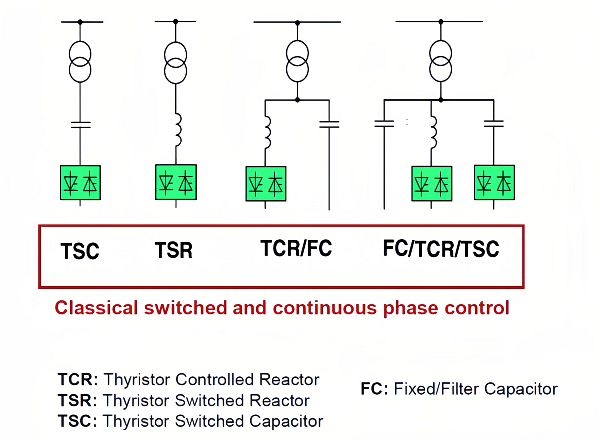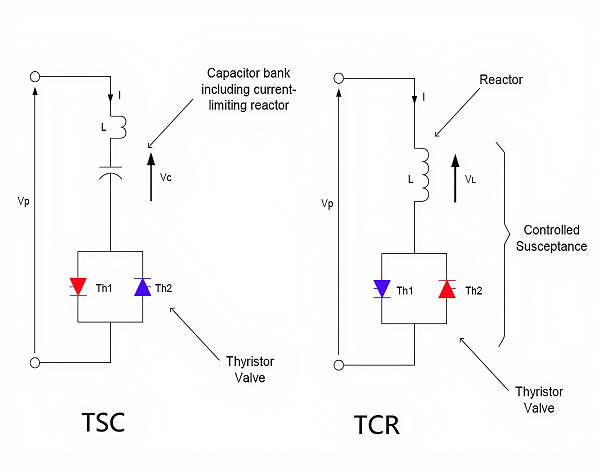
Voltage instability, flickering lights, and reactive power issues—these are signs that your power system is struggling to keep up with dynamic loads.
A Static Var Compensator (SVC) regulates reactive power in real-time, stabilizing voltage and improving power quality in both utility grids and industrial systems.
From steel plants to data centers, SVCs have become vital for ensuring stable and efficient power delivery. Let’s explore how they work and where they bring the most value.
What is SVC?
Many power systems struggle with fluctuating loads that distort voltage levels and degrade performance.
An SVC is a flexible AC transmission system (FACTS) device used to regulate voltage and manage reactive power through fast, precise control of capacitor and reactor banks.

A Simple Explanation
An SVC dynamically adjusts the reactive power balance by absorbing or injecting vars (volt-ampere reactive). Unlike fixed compensation methods, SVCs are faster and more responsive. They are especially useful in applications where load conditions change frequently—like in electric arc furnaces, mining, or rolling mills.
In my experience supplying capacitor-based SVC components, customers in renewable power plants appreciate how SVCs maintain voltage despite intermittent output, reducing stress on inverters and transformers.
Technical Summary
| Component | Function |
|---|---|
| Thyristor Controlled Reactor (TCR) | Absorbs reactive power on demand |
| Thyristor Switched Capacitor (TSC) | Injects reactive power as needed |
| Harmonic Filter | Eliminates harmonics produced by TCR |
| Control System | Ensures fast and smooth compensation |
What are its Usage Areas and Advantages?
Industrial sites and utility substations often face unexpected power factor shifts or voltage flickers. These can damage sensitive equipment and interrupt production.
SVCs are used across industries such as steel, mining, railways, and renewables to provide fast reactive power support and voltage stabilization.

Key Usage Areas
1. Steel Plants
Electric Arc Furnaces (EAFs) generate rapid reactive power fluctuations. An SVC helps smooth these effects, stabilizing bus voltage and preventing flickers.
2. Renewable Power Plants
Solar and wind systems often cause voltage drops or spikes. SVCs help maintain grid code compliance by injecting reactive power instantly.
3. Railway Traction Systems
Trains act as moving loads. SVCs stabilize voltage along the line, especially in 25kV AC electrified railways.
4. Oil & Gas Refineries and Chemical Plants
Large motors and compressors in these industries need stable voltage. SVCs improve motor startup reliability and prevent voltage collapse.
5. Data Centers and High-Tech Facilities
Fast-reacting loads like server racks and cooling systems benefit from the millisecond-level response of SVCs, keeping the power clean and continuous.
Advantages at a Glance
| Advantage | Explanation |
|---|---|
| Fast Response | Reacts in less than one cycle (<20ms) |
| Voltage Stabilization | Reduces flicker, overvoltage, undervoltage |
| Power Factor Improvement | Keeps PF close to 1 |
| Harmonic Reduction | With proper filters, mitigates harmonic impact |
| Enhanced Grid Compliance | Helps meet utility or ISO grid code requirements |
What are the Two Types of SVC? TCR and TSC
People often confuse the building blocks of SVC. But the two main components are very different in function and behavior.
SVCs use TCR (Thyristor Controlled Reactor) to absorb reactive power, and TSC (Thyristor Switched Capacitor) to supply it.

Understanding TCR
TCRs use thyristors to regulate the flow of current through a reactor. By adjusting the firing angle, the SVC can control how much reactive power is absorbed.
Benefit: Smooth and stepless control
Challenge: Generates harmonics
Understanding TSC
TSCs connect capacitor banks using thyristors. Unlike TCR, TSC units are either fully on or off.
Benefit: Fast and clean switching, no harmonics
Challenge: Stepwise compensation, not as smooth
Typical Architecture
| Component | Function | Characteristics |
|---|---|---|
| TCR | Absorb vars | Stepless control, needs filters |
| TSC | Inject vars | Stepwise, fast response |
In many of our SVC solutions for high-power drives in mining and oil refineries, a combination of TCR and TSC provides both accuracy and speed, balancing cost and performance.
What is TCR+FC System?
In older systems or where cost is a key constraint, a combined TCR + FC system is still used effectively.
TCR+FC means a TCR works with a fixed capacitor (FC) bank to achieve variable reactive power compensation with lower cost and moderate performance.

How It Works
- The Fixed Capacitor (FC) continuously supplies reactive power.
- The TCR absorbs excess vars when needed.
- Together, they create a quasi-dynamic system at a lower price point.
This approach lacks the smoothness of full TCR+TSC systems but is still widely used in:
- Cement plants
- Older substation retrofits
- Rural grid nodes
We helped a cement factory in Southeast Asia upgrade their old capacitor bank to a TCR+FC system. Despite the budget constraints, this setup reduced flicker complaints by 60%, earning regulatory approval and improving production uptime.
How does an SVC work?
Reactive power needs fluctuate in milliseconds, but traditional compensation can’t keep up.
An SVC monitors voltage in real-time and adjusts its thyristors to inject or absorb reactive power within one cycle (20ms), keeping voltage stable and power factor optimal.

Working Principle Step-by-Step
Sensing
Sensors continuously monitor the bus voltage and load current.Controller Response
The central controller calculates the needed vars and selects whether to trigger TCR or TSC units.Thyristor Switching
Firing signals are sent to thyristors to turn on/off the capacitors or adjust reactor firing angles.Reactive Power Adjustment
The system dynamically injects or absorbs vars to maintain target voltage or power factor.
Real-Time Example
| Event | SVC Reaction | Timeframe |
|---|---|---|
| Large motor startup | Inject vars via TSC | <20ms |
| Load drop at substation | Absorb vars via TCR | <1 cycle |
| Harmonic disturbance | Divert through filter | Continuous |
| Grid voltage drop (solar cloud cover) | TSC instant boost | Sub-second |
In our collaboration with a wind farm developer in Inner Mongolia, we used a metal-enclosed SVC bank with both TCR and TSC. It kept grid voltage stable even under 60% load variation within seconds—this helped the site meet national grid connection standards.
Conclusion
SVCs bring stability and speed to power systems. From steel and mining to renewables, they deliver real-time reactive power control that protects equipment, improves efficiency, and keeps systems running smoothly.
